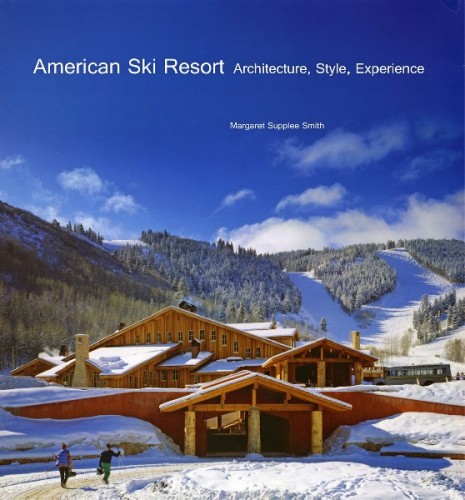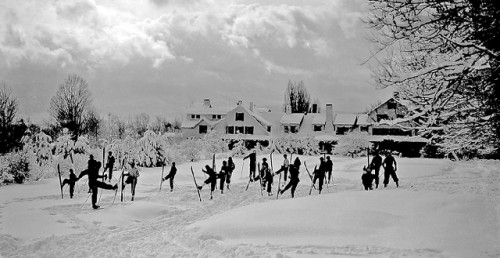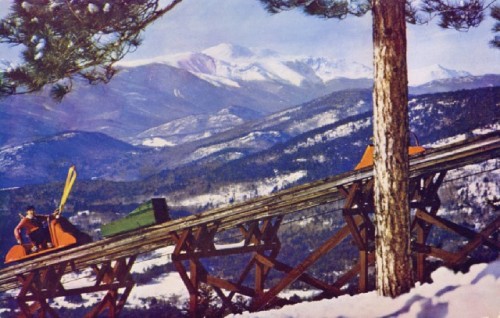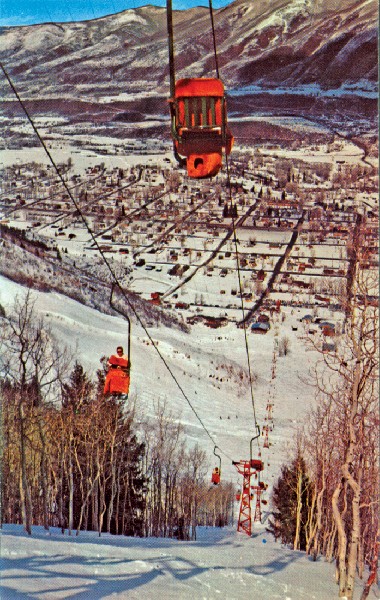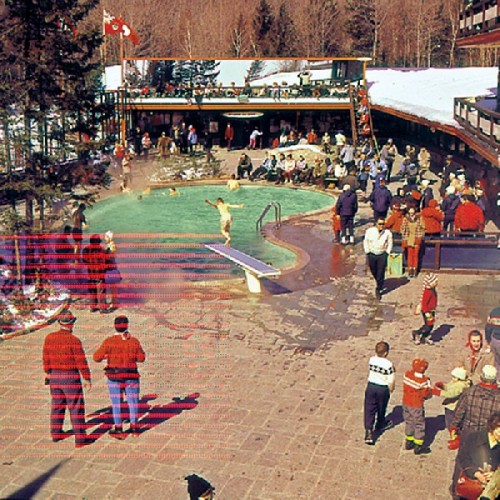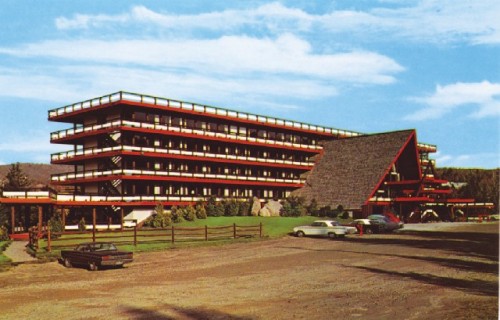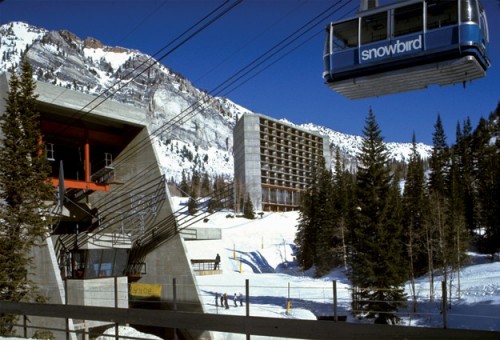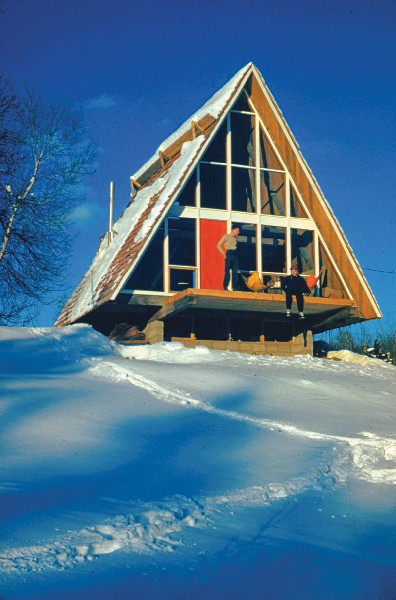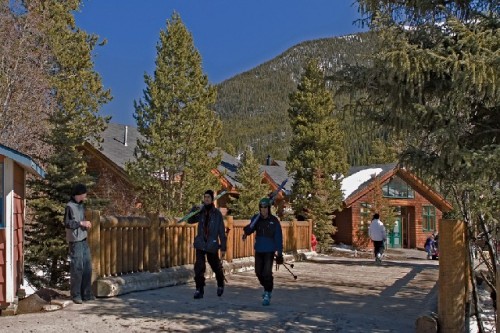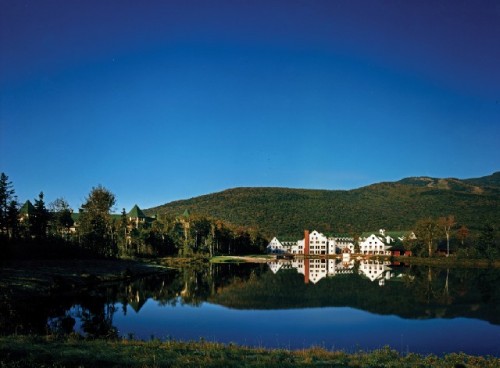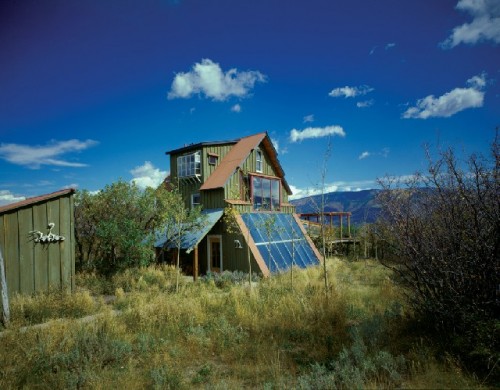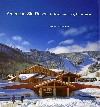American Ski Resort: Architecture, Style Experience
Lavish Book by Margaret Supplee Smith
By: Charles Giuliano - Sep 23, 2014
American Ski Resort: Architecture, Style, Experience
By Margaret Supplee Smith
352 Pages, 10 x 11
198 Color Photos, 107 B&W Illustrations
Footnotes, Bibliography, Appendix One, Three Generations of Ski Resort Architects; Appendix Two, Biographies of Ski Resort Architects and Landscape Architects
University of Oklahoma Press, July, 2013 ISBN 978-0-8061-4295-1 (Hardcover)
Think snow.
As winter fast approaches some 56 million Americans will hit the slopes.
Here in the Berkshires there are nearby destinations like Jiminy Peak as well as local lifts for day trips. We are in easy reach of renowned resorts in Vermont and New Hampshire.
In order to survive the economics of short winters destinations in the once pristine wilderness have evolved into all season resorts with a range of outdoor activities. The most logical add on is golf as resorts have become ever more elaborate catering to an upscale clientele.
In the Pre War years the initial hearty souls, like the Dartmouth Outing Club, hiked up mountains and managed on average two to three runs during an arduous day. During the Depression years of the 1930s young men were put to work by the WPA and CCC to clear trails on mountains of Federal land and erect rustic lodges.
From our deck we can see one, Bascomb Lodge, on top of Mt. Greylock here in the Berskhires.
Ski trains were organized to get city dwellers to the slopes on their day off. Under its chairman Averell Harriman Union Pacific developed Sun Valley in 1936.
The pioneers of the winter sport accepted roughing it bunk style in barns and rustic lodges. During the expansion of the 1960s cheap A frames with no running water and few creature comforts were set down on small plots.
In the 1980 recession visits dropped from 48.2 million in 1979-80 to 39.7 million in 80-81. Through a number of recessions there were fluctuations. When money gets tight ski trips and vacation homes become expandable. There was a decrease from 60.5 million in 2007-08 to 57.3 million in 2008-2009.
Over the past 25 years, the number of operational ski areas in the US has declined 36%. This went from 735 areas in 1983-84 to 471 and then from 1998-99 and 2007-2008, the number of areas fluctuated at around 500.
Food services morphed from getting a hot dog or bowl of chili in the warming lodge to high end gourmet dining in spectacular settings. Local residents, ski bums and support staff have been priced out with long commutes and indentured accommodations.
Perhaps the ultimate overkill is represented by the 1990 Hagman Yaw designed Aspcol, a 53,000 square foot Aspen structure, built for Prince Bandar of Saudi Arabia. It is larger than the firm’s design for the 1976 Aspen airport terminal.
American Ski Resort: Architecture, Style Experience by Margaret Supplee Smith is a lavishly illustrated, meticulously researched and gorgeously designed book that tells an absorbing and compelling tale of the development of a sport and its enormous social, economic and environmental impact. With a specialty in American art and architecture Smith is the Harold W. Tribble Professor of Art, emerita, at Wake Forest University in North Carolina.
The author began recreational skiing in the late 1960s when her parents bought a home near Mt. Snow in Vermont. In 1994 Smith and her husband Jackson, who shot many images in the densely illustrated book, made their first trip to ski in the west. She became interested in the aspects of architecture and resort development from reconfiguring old mining towns like Aspen to creating new lavish communities near high mountains. Proximity to urban populations is a necessary aspect for development. Interstate highways construction cut the time from city to slope in half.
When ways of getting to Sun Valley became more diverse, significantly, Union Pacific bailed out of its investment which was ever more costly to maintain.
Compared to the 1960s there are now many options of skiers of all levels of skill and financial resources. This dramatic increase of supply led to resorts being passed through owners and resulting in diversification.
Developers of the early ski destinations bought and controlled large tracts of land. In addition to maintaining the slopes they also provided housing first in bunk houses and simple hotels. That meant a lot of liquidity and management. It became more pragmatic to sell off parcels to condo developers and speculators. That allowed for more focus on resort development and maintenance.
Smith’s curiosity aroused led to a decade of intensive research. While the initial inspiration was provided by dealing with the architecture in assembling this book she expanded into the fascinating biographies of generations of architects, entrepreneurs and environmentalists.
Early on individuals with a passion for the sport sought ways to make a living and support their ski habit. During the war German and Austrian athletes relocated to New England opening ski schools and renovating properties for an influx of visitors. A number of GI’s from the 10th Mountain Division which fought on rugged Alpine terrain became instructors and developers.
Initially the look of the architecture attempted to emulate that of the Swiss and Austrian Alps. Some of the pioneers were formally trained. Herbert Bayer was educated at the Bauhaus and worked with Walter Gropius. Frederick “Fritz” Benedict trained under Frank Lloyd Wright.
There was an irony as skiing expanded with few if any environmental or zoning codes. Other than laying out trails there was little long range planning for the expansion that got out of scale. Early on skiers enjoyed the rugged village life. The incentive was to escape to nature.
Eventually ski destinations came to look more and more like small, dense cities. As property values soared so did the height and scale of hotels and condo complexes. Problems arose about hiding all those cars and the polluting run off from eroded, clear cut slopes, salt from vast parking lots, and sewage.
The early chapters of the book are engaging and charming. There is a delightful range of hearty souls and rugged characters. As skiing evolved from sport to speculation and industry it was eventually built, financed and managed by individuals and corporations more interested in the bottom line than breathing mountain air.
Ski journalism morphed from the sports to the business pages.
As skiing has become ever more expensive its demographics have changed. With ever aging skiers paying most of the bills they average just a couple of hours a day on the slopes. Resort evelopment has been focused on keeping them entertained the rest of the time with an array of urban luxuries in ersatz rural setting.
Ski bums playing hooky from college have been replaced by slackers on trust funds.
While not an avid skier since college years, and probably not the targeted reader for this book, I loved every page. The range and depth of topics proved to be fascinating.
An intriguing subtext is the transition from kitschy esrastz Alpine chalet to every more sophisticated design. As well as technologies for building in a cold mountain environment. This entails handling snow on the roof, passive solar and energy conservation. There has been increased emphasis on preserving trees and minimal disruption of nature.
More than just chronicling a winter sport Smith provides an overview of post war economic development and a rising middle class. Decades of prosperity provided time and resources for recreation and leisure. That boom led to consequences through poor land management, blight and pollution.
Through the political process overwhelmed small towns and villages fought for local values and their eroded traditional lifestyle. With successful legislation, and the now complex permitting process, the fast pace of new resort development slowed to a crawl.
There is a dark side to the entropy of ski development and design geared to the super rich.
While judicious in spelling out the issues Smith is fair, honest and tells it like it is.
In so doing she has gone way outside the lines of an academic account of post modern design. This has resulted in a gorgeous coffee table book, perfect for gift giving during the holiday season. With the caveat that this upbeat narrative has an intriguing dark side.
This is a compelling book for folks like me for whom skiing means watching the Winter Olympics on TV.

